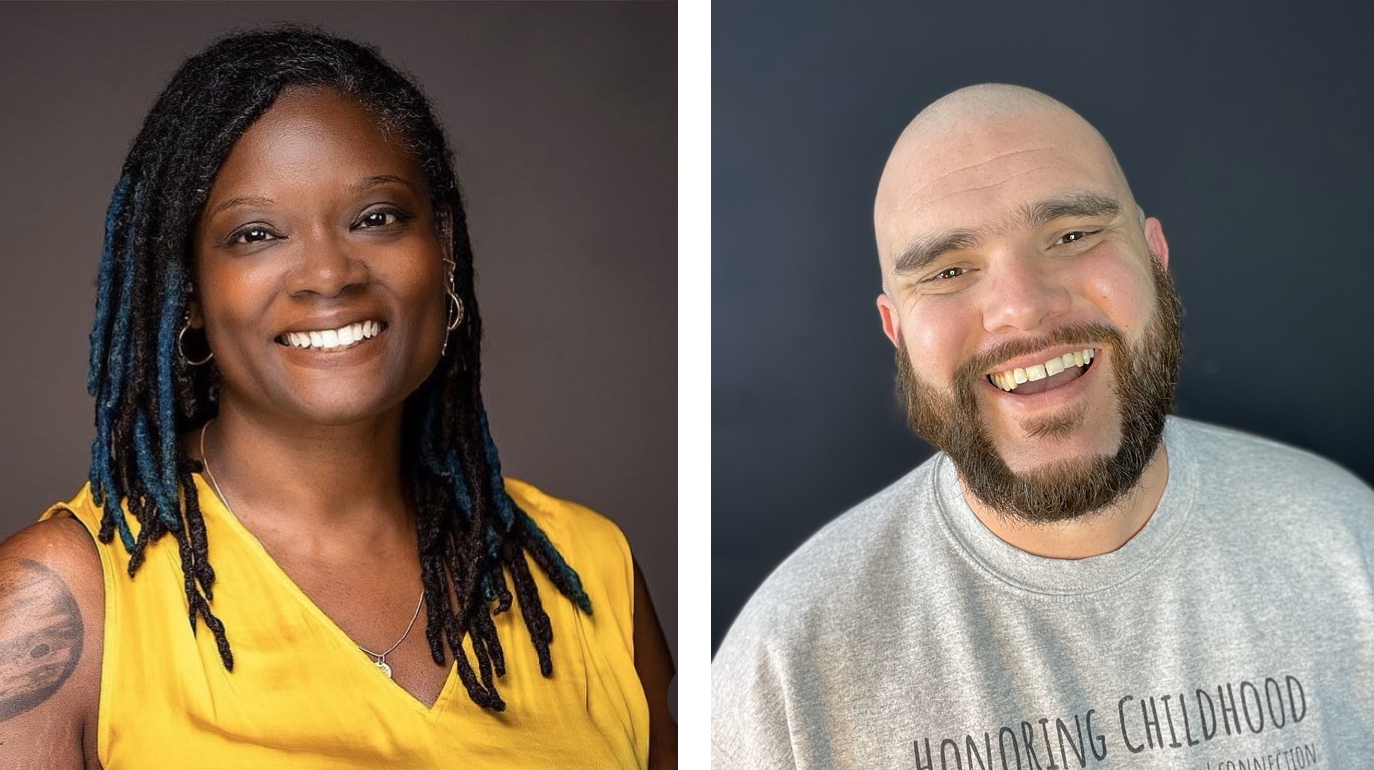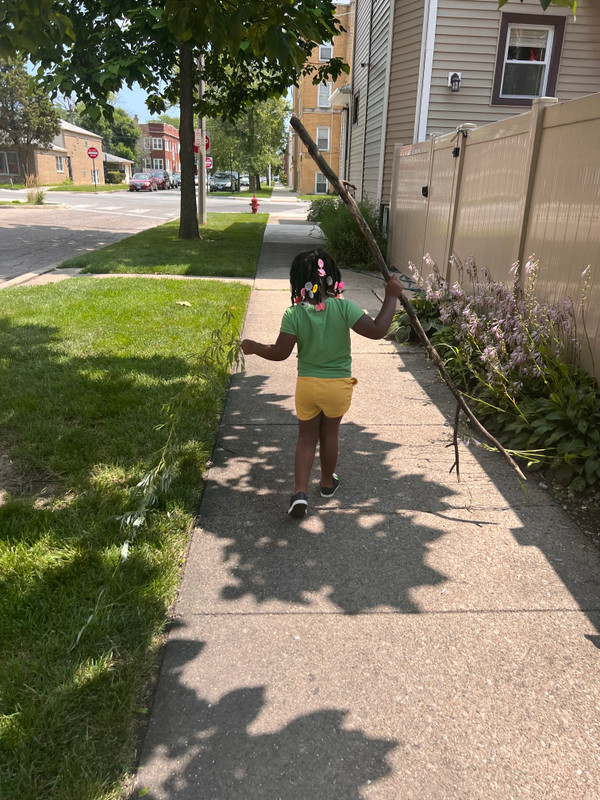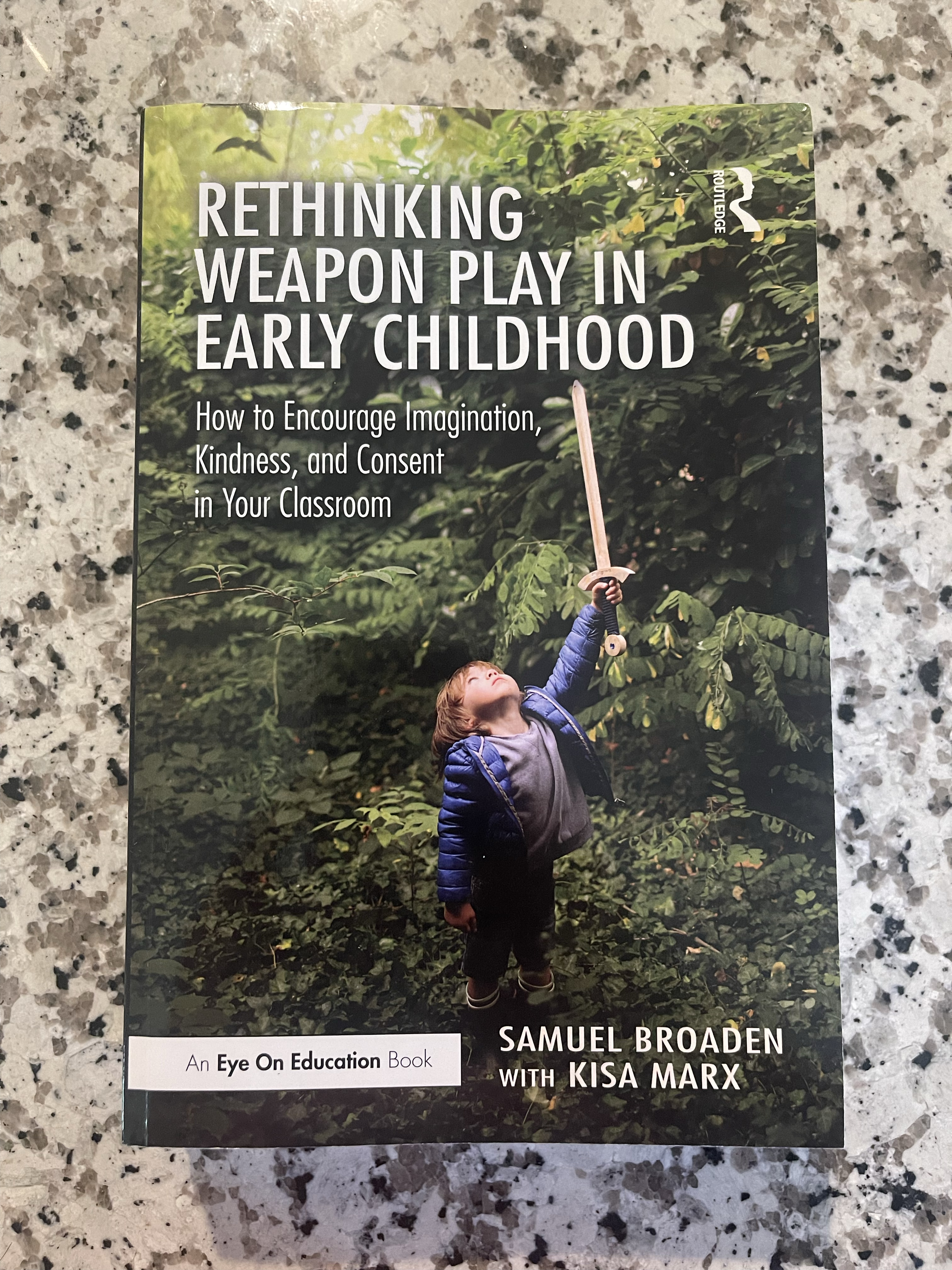Meet Kisa Marx and Samuel Broaden, authors of Rethinking Weapon Play in Early Childhood.
1. What inspired you to write a book about the benefits of risky play?
Kisa - What inspired me to write this book is the belief that, aside from situations where there is a risk of harm to people or property, there should be no restrictions on play by childhood practitioners. Allowing children to engage in a variety of play experiences is vital to their development. 'Rethinking Weapon Play' serves as an open letter to professionals in the field, urging us to critically examine our 'no's' and determine whether they are adult-imposed or genuinely centering on the child's needs.
Samuel - For me, it was a conversation I had with a kindergarten class of mine. I speak about it in the book but I was a forest kindergarten teacher and noticed the children engaging in weapon play quite frequently and I decided that instead of continuing to say “no”, I would have a conversation with them about it-why they enjoy it, etc. The conversation was one of the most beautiful times in my career and led to so many great moments and lessons on consent, kindness, and more. I wanted other folks to have the same beautiful experience and it also encouraged me to help encourage other practitioners to think deeper about the work that we do-especially the things we frequently say “no” to.
2. What can parents and educators expect to learn from your book? Who should buy it?
Kisa - A lot of reflection, a change in perspective, and maybe even a little pushback. We hold on to those unwritten and unspoken rules tightly, and challenging what is deeply ingrained may activate you even if you're receptive enough to give it a read!
Anyone who regularly interacts with children should purchase this book. It's a long-overdue topic, and whether you discuss it in a book club, with a close friend or partner, or reflect on it alone, it's time we start giving this topic our consideration.
Samuel - Practitioners and families can expect exactly what Kisa said-lots of space for reflection, hopefully a deepening of a thought process, and a non-judgmental space as we both know and understand we all come from our own experiences and we are all at a different place in our journeys.
Anyone who works with or has young children could benefit from this book. It’s far past time that we begin to rethink not just weapon or risky play but so many things we do in early childhood.
3. How did you define "risky play" in your book?
Kisa - Risky play encompasses a wide range of activities, from hopping off the bottom step to exploring weapon play. My personal description of risky play is doing 'dangerous things carefully,' as Dr. Peter Gray would say. This can include both social-emotional risks and physical risks.
Samuel - Risky play is any type of play that offers healthy risk for the child. Whether that be climbing a tree, wading in a creek, rough and tumble play, or weapon play.
4. Can you briefly allude to the benefits of risky play for kids knowing our readers can get more details in your book?
Kisa - For me, it would be self-efficacy. As early childhood professionals, we've got ONE JOB: see the child as capable and watch them rise to the occasion. Allowing a child to navigate complex situations, take risks, try, fail, and learn is how we strengthen that muscle that tells us we are stronger than we know, braver than we believe, and just as smart as we knew we were!
Samuel - For me, it is about thinking of our own experiences and how those inform who we are today. For example, I was not encouraged to take risks as a child and now as an adult I have a hard time taking risks in my life-either personally or professionally. I want something different for children. So I want spaces where they are encouraged to take risks so they feel and understand the power they hold within themselves and can carry that with them throughout their life.
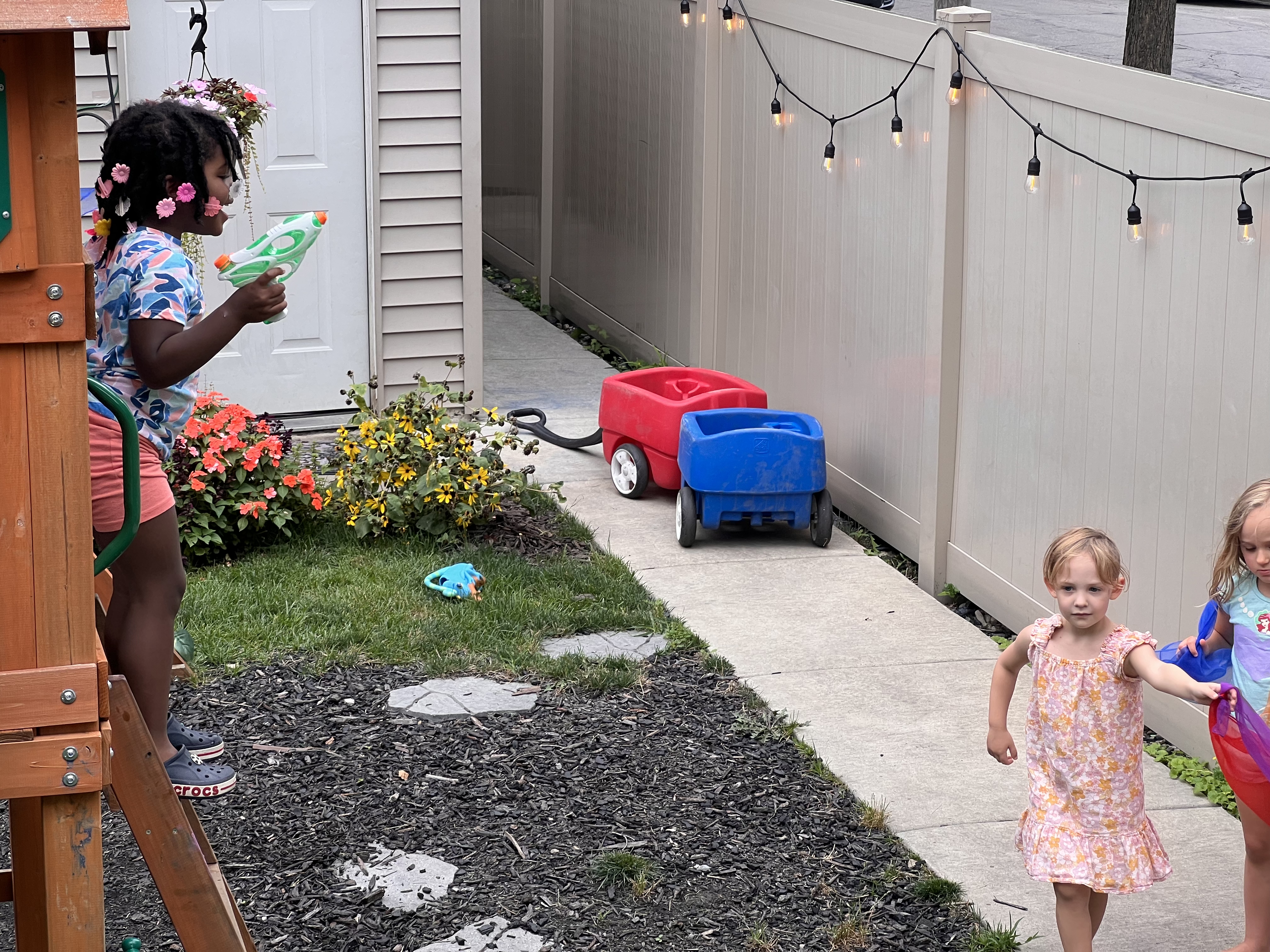
5. What about safety and liability when it comes to encouraging risky play?
Kisa - So long as our profession involves working with small children, safety and liability will always be occupational hazards. A child can have a spill on the playground just as easily as they can fall from a tree while on a forest trip. They can pick up complex concepts from playing a 'game of life' with a friend just as easily as they can from overhearing adults who think they aren’t listening. Similarly, a child can knock out a tooth during rough-and-tumble play or, as happened with me, knock out a tooth stepping down from a learning tower. There are risks in everything we do, every single day. It is our job to discern between the risks that accompany daily existence and the hazards where we need to intercede.
Samuel - As Kisa said, there is always the occupational hazard of safety in our work. The important thing is defining risk versus hazard as well as having conversations with the families of the children we are working with. Letting them know our beliefs and that children may get hurt as they play and explore but that we have their safety at the forefront of our minds. Also, children will get hurt. Period. No matter how much risk we allow or don’t allow. However when we make healthy risk a normal part of our days, children will be better equipped to handle it.
6. Have you encountered any opposition or skepticism about the concept of risky play? How do you respond to those critics?
Kisa - No, not overt opposition. I’ve received glances from adults in the park when children are climbing high or engaging in big body play, but I’ve never had anyone directly voice concern about my choices regarding how the children in my care play.
Samuel - I’ve had some pushback when it comes to weapon play, but the most important thing to me in my work is conversations so when I get questions or concerns, I see it as an opportunity for conversation where we can expand our way of thinking. Bottom line is that this type of play is developmentally responsive and natural and that children will explore this type of play whether we say no or not so wouldn’t you rather have conversations around it instead of just saying no?
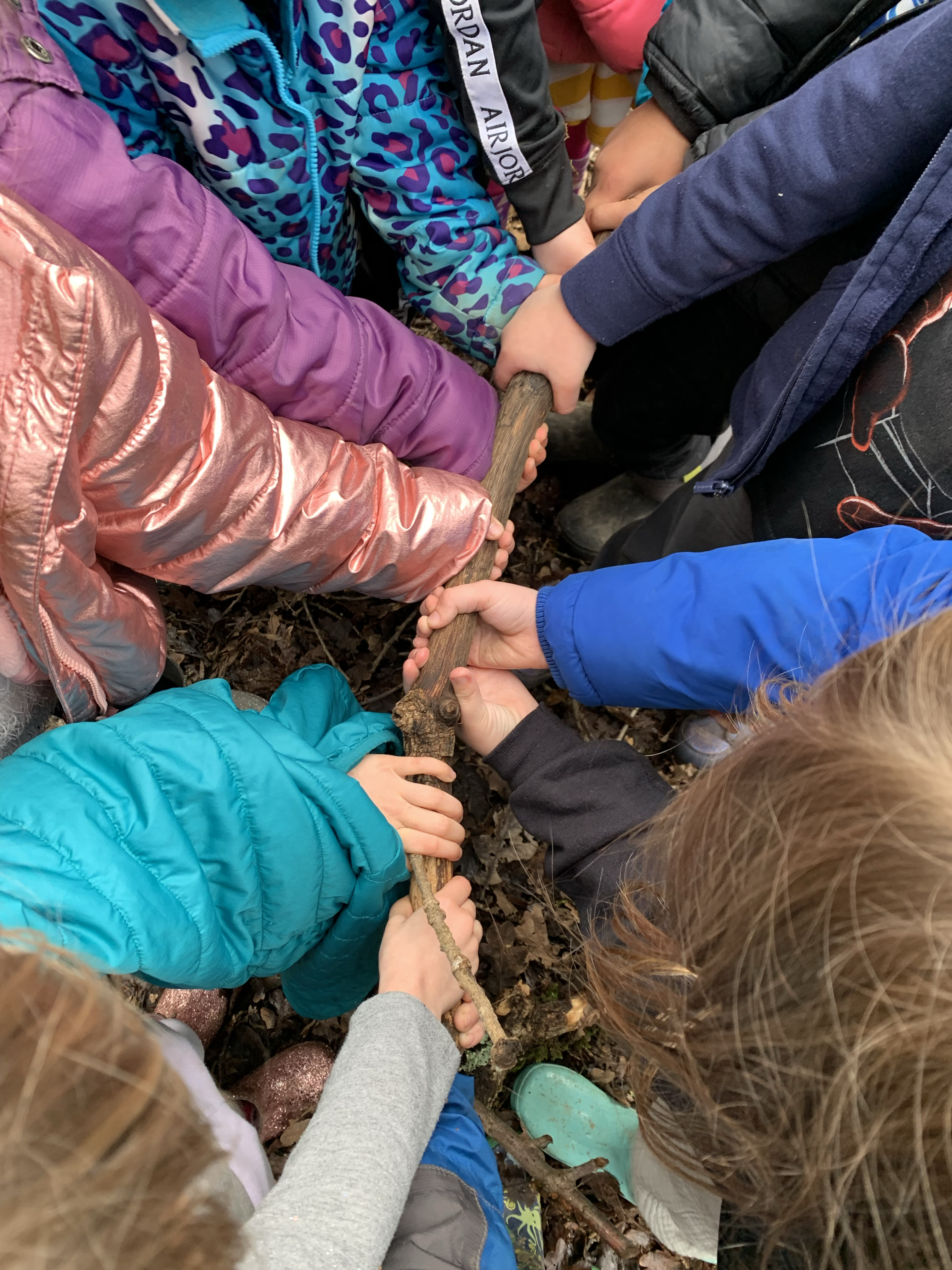
7. What advice would you give to parents or caregivers who may be hesitant to embrace the idea of risky play for their children?
Kisa - I always lead with grace and space. Grace because I didn't reach this point in my practice overnight. I was an apprehensive parent and an early educator with fears about safety, judgment, and liability. I want to always make space for the part of our shared humanity that is emerging in new concepts and beliefs. I'll offer space for those emerging concepts to take their first nervous steps, to take a tumble, and then grow naturally. I can't force anyone's hand. We all come to where we need to be on our own—it's the only way.
Samuel - Start small. It’s a big change. And be honest with yourself and with your children. When I had that conversation with my kindergarten children, I let them know that I was a bit uncomfortable with that play but I wanted to work through that and trust them in their play. That was a huge step. So start small and don’t be afraid to talk through your feelings. It’s important for children to see adults working to shift their mindsets-that way they don’t grow up thinking adults should know everything (and then when they are adults and don’t know everything, they won’t feel bad!)
8. Now that you have reviewed our Risky Toy category at ODSS. What items are your specific GO-TOs for parents and teachers looking to expose children to the benefits of risky play?
Kisa - The bow and arrow and slingshot are two items that really get my attention—although the sword is awesome too! I'm a fan of items that pack a whole lot of punch. With both the bow and arrow and the slingshot, you're building hand-eye coordination, enhancing motor skills, sharpening problem-solving skills, learning responsibility and safety, and developing executive functioning through concentration and focus. What's not to like about that?
Samuel - The slingshot is awesome! Like I want one! Also it’s something that will really excite the children and they will love being able to explore with it.
